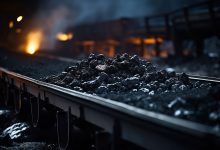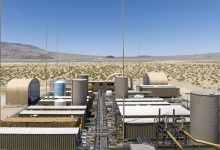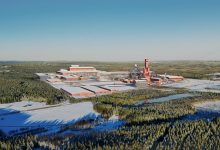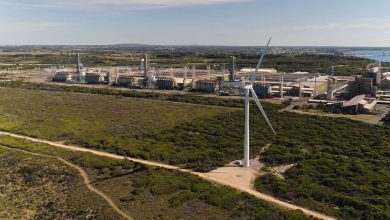Copper contribution to the global circular economy and a sustainable future
Copper demand to reach 9.7 million tonnes by 2035
Copper is at the heart of many global trends, such as increasing the use of energy-efficient equipment, renewable energy generation and electromobility.
Energy-efficient equipment—including distribution transformers, electric motors and air conditioners—is a major user of copper. A combined material demand growth rate of 4.1% per annum is forecast, reaching an annual figure of 9.7 million tonnes of demand by 2035.
Wind and solar power currently constitute 12% of the global energy mix, and it is estimated that each will account for over one terawatt of global capacity by 2035. The rapid growth of wind-power installations, for example, will be a short-term copper demand driver, with new installations expected to use an average 550 kilo tonnes of copper per annum up to 2021.
Electric vehicles—which could account for some 34% of global sales by 2035—contain more copper than conventional vehicles due to additional wiring, electric motors and batteries. China is leading the way in this growing market thanks to subsidies outlined in China’s 13th Five Year Plan, and Made in China 2025. Worldwide charging infrastructure development will also contribute to significant material demand in the field of electromobility.
Infinitely recyclable without loss of properties, copper already contributes to the global circular economy and a sustainable future. Europe leads the way, with around half its copper demand met by recycled material.
According to work commissioned by the International Copper Association, and carried out by the Fraunhofer Institute, approximately 440 million tonnes of copper were in use worldwide in 2015. Nearly 27 million tonnes of material went into service in 2015, including 8.5 million tonnes of recycled copper.
Recycling alone cannot satisfy rising demand for copper, but the contribution of recycling to global supply can be increased through improved collection and investment in the development and use of better separation technologies for discarded products.
From powering innovative new technologies, through recycling and back into service, copper has a significant role to play in creating a greener and more sustainable future for the world.
Europe’s copper industry
The direct copper industry in the EU is made up of around 500 companies, has an estimated turnover of about EUR 45 billion, and employs around 50,000 people.
In addition, ‘downstream’ sectors based on the added value achieved through the use of copper products (e.g. energy utilities, electricians, automotive companies, electronic equipment manufacturers, plumbers and roofers) employ several million people and represent a substantial part of EU’s industrial base.
The front end of the copper value chain is made up of three distinct sectors:
- Miners, who extract naturally occurring ores and convert them into ‘concentrates’, made up of roughly one third copper, one third sulphur and one third iron silicate.
- Producers, usually referred to as smelters and refiners, convert concentrates, imported intermediate materials and end of life scrap into copper metal. This process also generates important quantities of many other valuable metals, including gold and silver.
- Semi-fabricators then convert this metal, along with clean scrap, into products, such as wire-rod, tubes, sheet and strip, for use down the value chain.
The number of companies who operate in all three of these sectors is extremely limited.
Miners
In 2016, around 916 kilo tonnes of copper were mined within the EU, accounting for around 5% of the world’s total production (source: International Copper Study Group). The EU’s mine copper sites are in Finland, Poland, Portugal, Spain and Sweden.
Producers (smelters and refiners)
In 2016, the EU28’s refined copper production was around 2.6 million tonnes, representing around 12% of worldwide production (source: ICSG). The main production sites are in Germany, Poland, Spain, Sweden, Finland, Belgium and Bulgaria. The final products from smelting and refining (copper cathodes) are made through electrolytic processes. These are either sold directly into the market, or melted and cast into shapes, typically referred to as billets and cakes, for easier processing by downstream users.
About 45% of raw material supplies to the EU28’s copper refineries are purchased, on the international market, in the forms of copper concentrates, blister, anodes and scrap. The remaining 55% comes from EU-based mines, copper-bearing residues and scrap.
With copper prices being global, it is increasingly difficult for EU producers to compete on the global market for the primary and secondary (scrap) raw materials they need. Today, six companies employ around 10,000 people across a dozen EU refineries. Only two companies’ refineries are partially integrated with their own mining operations.
Semi-fabricators
The products of the refineries (cathodes and shapes) are the major raw materials for the manufacturers of semi-fabricated products. With an output of more than 150% of the EU refinery output, semi-fabricators need to import cathodes and/or secure access to a significant amount of ‘clean’ scrap – in the range of 1 million tonnes per year.
The 2016 production of semi-fabricated copper and copper alloy products was 4.4 million tonnes (source, ICSG) which is around 20% of worldwide production. The range of semi-fabricated products is very wide, but consists primarily of rods, profiles, wires, tubes, sheet and strip. Applications are even more diverse, covering sectors such as electrical engineering, automobiles, construction, machinery, shipbuilding, aircraft, precision instruments, watches and clocks.
The electrical wire-rod sector accounts for just over half of the semi-fabricated production. Some 20 companies employ around 3,000 people in total. Many more companies operate in the semi-fabricated products sector. About 80 companies, employing some 35,000 people throughout the EU28, produce copper and copper alloy rods, bars, wires, sections, tubes, sheet and strip. Around 30 companies have integrated foundries, for the in-house production of cakes, billets and other shapes while the others purchase their requirements on the merchant market.
Many other metals are used in copper alloys. There are estimated to be over 500 different alloys available in the EU market place. The most common alloying elements are zinc, nickel, lead, tin, silver and beryllium.








